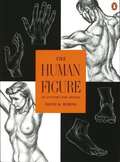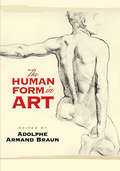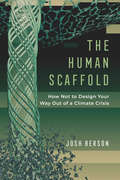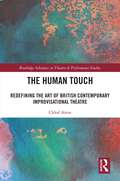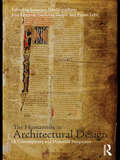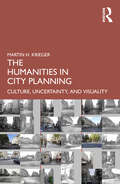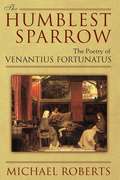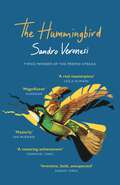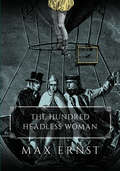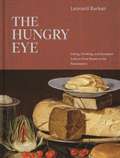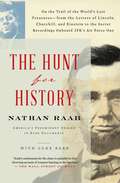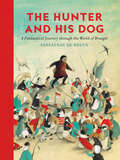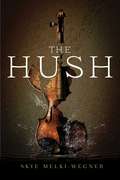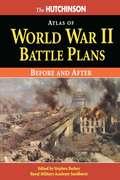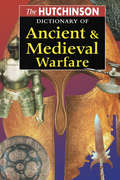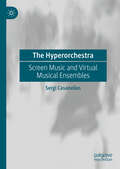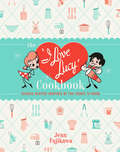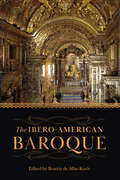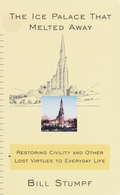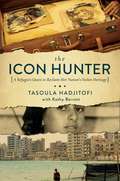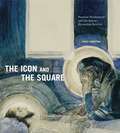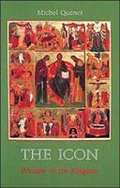- Table View
- List View
The Human Figure: An Anatomy For Artists
by David K. RubinsA brief yet in-depth presentation of the human anatomy.
The Human Form in Art
by Adolphe Armand BraunAs individual as a snowflake, the human body is a marvel of form and function. This dramatic compilation of 166 studies—photographs, line drawings, and sculptures—serves as both an exhilarating exhibition and an important reference. Key topics include:AnatomyProportionMotionOther advice covers the selection of models, the human form in sculpture, and the role of art in the theater. Artists at every level of experience as well as art lovers will benefit from this classic guide.
The Human Scaffold: How Not to Design Your Way Out of a Climate Crisis (Great Transformations #2)
by Josh BersonHumanity has precipitated a planetary crisis of resource consumption—a crisis of stuff. So ingrained is our stuff-centric view that we can barely imagine a way out beyond substituting a new portmanteau of material things for the one we have today.In The Human Scaffold, anthropologist Josh Berson offers a new theory of adaptation to environmental change. Drawing on niche construction, evolutionary game theory, and the enactive view of cognition, Berson considers cases in the archaeology of adaptation in which technology in the conventional sense was virtually absent. Far from representing anomalies, these cases exemplify an enduring feature of human behavior that has implications for our own fate.The time has come to ask what the environmental crisis demands of us not as consumers but as biological beings. The Human Scaffold offers a starting point.
The Human Touch: Redefining the Art of British Contemporary Improvisational Theatre (ISSN)
by Chloé ArrosThe Human Touch is a book focused on the creative processes at work in British contemporary improvisational theatre and how these processes draw on the humanity of the participants: their cognitive abilities, their lives, and their relationships to each other. Vulnerability is a main feature of both the book and of improvisational theatre, both part of the hurdles that improvisers face and a creative tool. Through a study of improvisation and vulnerability, the book teaches us both what makes improvisational theatre so human and opens the door to a reflection about how to use humanity and human emotions in performance. Most importantly, it delves into the cognitive and physiological processes at work in improvisation, a topic which is missing from most manuals and studies offered to students. This book is addressed to theatre students and provides both an important overview of the form’s history and a challenge to what is usually taught about improvisation.
The Humanities in Architectural Design: A Contemporary and Historical Perspective
by Soumyen BandyopadhyayOffering an in-depth consideration of the impact which humanities have had on the processes of architecture and design, this book asks how we can restore the traditional dialogue between intellectual enquiry in the humanities and design creativity. Written by leading academics in the fields of history, theory and philosophy of design, these essays draw profound meanings from cultural practices and beliefs. These are as diverse as the designs they inspire and include religious, mythic, poetic, political, and philosophical references. This timely and important book is not a benign reflection on humanities' role in architectural design but a direct response to the increased marginalization of humanities in a technology driven world. The prioritization of technology leaves critical questions unanswered about the relationships between information and knowledge, transcription and translation, and how emerging technologies can usefully contribute to a deeper understanding of our design culture.
The Humanities in City Planning: Culture, Uncertainty, and Visuality
by Martin KriegerThis book by preeminent planning theorist Martin H. Krieger explores how cities are much more than their economies, demographies, or geographies. Planning today is dominated by social science, but Kreiger takes a different approach, thinking of city planning in terms of Culture, Uncertainty, and Visuality. The chapters explore planners and their role as protagonist in the humanities of literature and history; the inevitability of uncertainty in planning and how to face it; and how to attend to the physical, visual, and aural environment of the city. Through a series of essays, Krieger shows that cities are cultural and meaningful, that they are contingent and so filled with opportunity, and that they are concrete, particular, and encountered. The Humanities in City Planning will be of interest to students and scholars of the humanities and planning looking for alternative ways of viewing the city.
The Humblest Sparrow: The Poetry of Venantius Fortunatus
by Michael RobertsA long-awaited study of the poetry of Venantius Fortunatus
The Hummingbird: ‘Magnificent’ (Guardian)
by Sandro VeronesiA BOOK OF THE YEAR FOR THE GUARDIAN: 'DEEPLY PLEASURABLE'A BOOK OF THE YEAR FOR THE SPECTATOR: 'WHAT A JOY''Magnificent' Guardian'A towering achivement' Financial Times'Inventive, bold, unexpected' Sunday Times'Everything that makes the novel worthwhile and engaging is here: warmth, wit, intelligence, love, death, high seriousness, low comedy, philosophy, subtle personal relationships and the complex interior life of human beings'Guardian'Not since William Boyd's Any Human Heart has a novel captured the feast and famine nature of a single life with such invention and tenderness'Financial Times'There is a pleasing sense of having grappled with the real stuff of life: loss, grief, love, desire, pain, uncertainty, confusion, joy, despair - all while having fun'The Sunday Times'Instantly immersive, playfully inventive, effortlessly wise'Observer'Masterly: a cabinet of curiosities and delights, packed with small wonders'Ian McEwan'A real masterpiece. A funny, touching, profound book that made me cry like a little girl on the last page'Leïla Slimani'A remarkable accomplishment, a true gift to the world'Michael Cunningham'Ardent, gripping, and inventive to the core'Jhumpa LahiriMarco Carrera is 'the hummingbird,' a man with the almost supernatural ability to stay still as the world around him continues to change.As he navigates the challenges of life - confronting the death of his sister and the absence of his brother; taking care of his parents as they approach the end of their lives; raising his granddaughter when her mother, Marco's own child, can no longer be there for her; coming to terms with his love for the enigmatic Luisa - Marco Carrera comes to represent the quiet heroism that pervades so much of our everyday existence.A thrilling novel about the need to look to the future with hope and live with intensity to the very end.THE NO. 1 INTERNATIONAL BESTSELLEROver 300,000 copies soldSoon to be a major motion pictureWinner of the Premio StregaWinner of the Prix du Livre EtrangerBook of the Year for the Corriere della Sera
The Hundred Headless Woman
by Dorothea Tanning Max Ernst André BretonOriginally published in Paris in 1929, this collage novel by avant-gardist Max Ernst constitutes a seminal 20th-century work of art. The artist's striking combinations of engravings from Victorian-era books and magazines, accompanied by enigmatic captions, offer a universe of mystery replete with all the possibilities of the bizarre dream world of the surreal. Images speak, language illustrates, and the reader's imagination provides the glue. "Irrational, violent, tender, ironic, Max Ernst has invoked the whole kaleidoscope of human phenomena in these collages ... [turning them] into stunning proposals for adventure," noted this volume's translator, Dorothea Tanning. The Hundred Headless Woman was the first of Ernst's collage novels, and its classic status ensures a place in modern art history classes. Every visit and re-visit to its pages tells a different story, an endlessly fascinating tale that runs an emotional gamut from keen humor to outright horror.
The Hungry Eye: Eating, Drinking, and European Culture from Rome to the Renaissance
by Leonard BarkanAn enticing history of food and drink in Western art and cultureEating and drinking can be aesthetic experiences as well as sensory ones. The Hungry Eye takes readers from antiquity to the Renaissance to explore the central role of food and drink in literature, art, philosophy, religion, and statecraft.In this beautifully illustrated book, Leonard Barkan provides an illuminating meditation on how culture finds expression in what we eat and drink. Plato's Symposium is a timeless philosophical text, one that also describes a drinking party. Salome performed her dance at a banquet where the head of John the Baptist was presented on a platter. Barkan looks at ancient mosaics, Dutch still life, and Venetian Last Suppers. He describes how ancient Rome was a paradise of culinary obsessives, and explains what it meant for the Israelites to dine on manna. He discusses the surprising relationship between Renaissance perspective and dinner parties, and sheds new light on the moment when the risen Christ appears to his disciples hungry for a piece of broiled fish. Readers will browse the pages of the Deipnosophistae—an ancient Greek work in sixteen volumes about a single meal, complete with menus—and gain epicurean insights into such figures as Rabelais and Shakespeare, Leonardo and Vermeer.A book for anyone who relishes the pleasures of the table, The Hungry Eye is an erudite and uniquely personal look at all the glorious ways that food and drink have transfigured Western arts and high culture.
The Hungry Scientist Handbook
by Patrick Buckley Lily BinnsInventive, (mostly) edible DIY gadgets and projects guaranteed to captivate The Hungry Scientist Handbook brings DIY technology into the kitchen and onto the plate. It compiles the most mouthwatering projects created by mechanical engineer Patrick Buckley and his band of intrepid techie friends, whose collaboration on contraptions started at a memorable 2005 Bay Area dinner party and resulted in the formation of the Hungry Scientist Society--a loose confederation of creative minds dedicated to the pursuit of projects possessing varying degrees of whimsy and utility. Featuring twenty projects ranging from edible origami to glowing lollipops, cryogenic martinis to Tupperware boom boxes, the book draws from the expertise of programmers, professors, and garden-variety geeks and offers something to delight DIYers of all skill levels.
The Hunt for History: On the Trail of the World's Lost Treasures—from the Letters of Lincoln, Churchill, and Einstein to the Secret Recordings Onboard JFK's Air Force One
by Luke Barr Nathan RaabNathan Raab, America&’s preeminent rare documents dealer, delivers a &“diverting account of treasure hunting in the fast lane&” (The Wall Street Journal) that recounts his years as the Sherlock Holmes of historical artifacts, questing after precious finds and determining their authenticity.A box uncovered in a Maine attic with twenty letters written by Alexander Hamilton; a handheld address to Congress by President George Washington; a long-lost Gold Medal that belonged to an American President; a note that Winston Churchill wrote to his captor when he was a young POW in South Africa; paperwork signed and filled out by Amelia Earhart when she became the first woman to fly the Atlantic; an American flag carried to the moon and back by Neil Armstrong; an unpublished letter written by Albert Einstein, discussing his theory of relativity. Each day, people from all over the world contact Nathan Raab for help understanding what they have, what it might be worth, and how to sell it. The Raab Collection&’s president, Nathan is a modern-day treasure hunter and one of the world&’s most prominent dealers of historical artifacts. Most weeks, he travels the country, scours auctions, or fields phone calls and emails from people who think they may have found something of note in a grandparent&’s attic. In The Hunt for History, &“Raab takes us on a wild hunt and deliciously opens up numerous hidden crevices of history&” (Jay Winik, author of April 1865)—spotting a letter from British officials that secured the Rosetta Stone; discovering a piece of the first electric cable laid by Edison; restoring a fragmented letter from Andrew Jackson that led to the infamous Trail of Tears; and locating copies of missing audio that had been recorded on Air Force One as the plane brought JFK&’s body back to Washington. Whether it&’s the first report of Napoleon&’s death or an unpublished letter penned by Albert Einstein to a curious soldier, every document and artifact Raab uncovers comes with a spellbinding story—and often offers new insights into a life we thought we knew.
The Hunter and His Dog
by Sassafras De BruynSpotting a bird in the distance, the hunter and his dog begin a madcap chase across the world of Pieter Bruegel the Elder. They stumble into some of the artist&’s most famous scenes: wedding dances, snowy villages, even the winding stairs of the Tower of Babel. Will they ever find the place where they belong? This wordless book introduces young readers to the Flemish Renaissance artist and his most beloved works, including The Hunters in the Snow and Children&’s Games. Includes informational endnote on Bruegel and an index of the paintings that inspired each illustration.
The Hurt Locker: The Shooting Script (Shooting Script)
by Mark Boal Kathryn BigelowOne of the most critically acclaimed war films in recent memory, The Hurt Locker is a riveting, extraordinary tale of courage and survival on the Baghdad bomb squad, directed by Kathryn Bigelow, from a script by Mark Boal, who researched the material by traveling to the war in Iraq. Boal's screenplay follows the layered, complex relationship between three soldiers who are thrown together in the crucible of combat—with only 38 days left in their tour. Starring Jeremy Renner, Anthony Mackie, Brian Geraghty, and Evangeline Lilly, with Guy Pearce, Ralph Fiennes, and David Morse.This Newmarket Shooting Script® Book includes: Exclusive Introduction by Kathyrn Bigelow Complete shooting script 16-page color insert with 23 color photos Production Notes Storyboards Complete cast and crew credits
The Hush
by Skye Melki-WegnerChester has taken to the road, traveling from village to village desperately searching for his father, who has disappeared. One night while fiddling to earn a few coins, he accidentally connects to the Song-the music that fuels every aspect of the world, and that it’s illegal for him to interact with. He’s caught and sentenced to death for his crime. Only a licensed Songshaper can bend music to his will.But someone in the crowd-a member of the infamous Nightfall Gang-stages a daring rescue and whisks Chester into the Hush, a shadowy nightmare mirror-world where Music can be deadly and Echoes can kill.Susanna, the Captain of the Nightfall Gang has been watching Chester. She needs him to pull off an elaborate plan that will take down the governing body that keeps her an outlaw and made her the fragment she is. Susanna needs him to exact her revenge, even if he dies doing it. Combining complex stakes, shifting loyalties, nods to fairy tales, and a Western feel, The Hush is a lush and exhilarating fantasy perfect for fans of Catherine Fisher’s Incarceron and Paolo Bacigalupi’s Ship Breaker.
The Hutchinson Atlas of World War II Battle Plans: Before And After
by Stephen BadseyThis text contrasts 21 World War II battle plans with their actual outcome. Each in-depth battle essay is complemented by original maps, producing fresh insight into the technical aspects of warfare that drove the last worldwide conflict of the 20th century. An overall introduction gives a strategic overview of the whole of the war, and places the individual battles into context. The battles are presented in seven groups of three, and each group is introduced by a short essay on the common theme for the group.
The Hutchinson Dictionary of Ancient and Medieval Warfare
by HutchinsonFirst Published in 1999. Routledge is an imprint of Taylor & Francis, an informa company.
The Hyperorchestra: Screen Music and Virtual Musical Ensembles
by Sergi CasanellesThis book studies the “hyperorchestra” as used in music for the screen and draws from the intersection of practice and theory. The term hyperorchestra derives from hyperreality, a postmodern philosophical concept coined by Jean Baudrillard. The hyperorchestra is a virtual ensemble that inhabits hyperreality. It approaches music spectrally with the aim of becoming a more effective vessel for meaning generation. The book is informed by concepts from postmodern philosophy, such as hyperreality and Marshall McLuhan's theory of media. The book is also informed by the author’s own compositional practice; it describes contemporary processes, current software tools, orchestration and instrumentation principles, and contemporary approaches to music composition (such as spectral music). In doing so, the book proposes a new perspective for analyzing contemporary film music that pinpoints the importance of the relationship between timbre, meaning, and the different narrative levels within an audiovisual piece.
The I Love Lucy Cookbook: Classic Recipes Inspired by the Iconic TV Show
by Jenn FujikawaLearn to feast like Lucy, Ricky, Fred, and Ethel and entertain in retro style with this collection of craveable classic recipes inspired by one of the greatest TV shows of all time. Recipes include:Cuban dishes such as Ricky Ricardo's Arroz con Pollo and Tropicana nightclub favoritesChocolate treats and other sweet delicacies inspired by Kramer's Kandy KitchenMid-century Hollywood's finest fare, from episodes set in the sunny film capitalClassic dishes from season three's "The Diner""Pioneer Women" Fresh-Baked Bread (easy on the yeast!)Classic cocktails to toast life's big events -- plus a recipe for Vitameatavegamin, so you can spoon your way to health!The I Love Lucy Cookbook brings to scrumptious life food featured on the show, as well as tantalizing dishes inspired by classic episodes such as "Lucy's Italian Movie," "Job Switching," and "Paris at Last." Filled with photos and illustrations, the book is also an exuberant celebration of an era and unforgettable television moments.
The Ibero-American Baroque (Toronto Iberic)
by Beatriz de Alba-KochThe Baroque was the first truly global culture. The Ibero-American Baroque illuminates its dissemination, dynamism, and transformation during the early modern period on both sides of the Atlantic. This collection of original essays focuses on the media, institutions, and technologies that were central to cultural exchanges in a broad early modern Iberian world, brought into being in the aftermath of the Spanish and Portuguese arrivals in the Americas. Focusing on the period from 1600 to 1825, these essays explore early modern Iberian architecture, painting, sculpture, music, sermons, reliquaries, processions, emblems, and dreams, shedding light on the Baroque as a historical moment of far-reaching and long-lasting importance. Anchored in extensive, empirical research that provides evidence for understanding how the Baroque became globalized, The Ibero-American Baroque showcases the ways in which the Baroque has continued to define Latin American identities in the twentieth and twenty-first centuries.
The Ice Palace That Melted Away
by Bill StumpfWith The Ice Palace That Melted Away, Bill Stumpf, the designer of the first ergonomic chair, addresses the symbiotic relationship between design and the way we live, the often deadening effect of technology, and his hopes for a more humane future. As a designer associated with Herman Miller, Inc., for more than twenty years, Stumpf has been thinking about the profoundly positive or negative effect design can have on our culture. He is both an idealist and a pragmatist, and his wry, anecdotal style gently reveals his shrewd observations about American customs and values. Stumpf is convinced that good design can create the right atmosphere to inspire learning, rehabilitate criminals, and generally lift our spirits. Since technology has succeeded in distancing us from the real experiences of life and such former pleasures as travel, in this facinating book he proposes a playful redesign of the Boeing 747 and a jaunty carriage-like taxicab to put us back in touch with travel as it once was. But it is an event such as the construction of the ephemeral ice palace in St. Paul, Minnesota, during the winter carnival--a source of joy and pride to adults and children alike--that encapsulates the idea of play, which Stumpf feels is essential to all our lives.This provocative book asks whether we might want to do something about our ever-declining levels of "comfort, hidden goodness, play, personal worth, and helping others" to make our future society a truly civilized one.(Black-and-white illustrations throughout.)From the Hardcover edition.
The Icon Hunter: A Refugee's Quest to Reclaim Her Nation's Stolen Heritage
by Tasoula Georgiou HadjitofiOne woman’s pursuit of justice leads her on a riveting adventure into the world of art trafficking. In this powerful memoir, Tasoula Hadjitofi reveals her perilous journey orchestrating “The Munich Case”—one of the largest European art trafficking stings since WWII. With the Bavarian police in place, the Cypriots on their way, seventy under-cover agents bust into the Munich apartment of a notorious Turkish smuggler suspected of holding looted antiquities. Tasoula places everything on the line to repatriate her country’s sacred treasures, unaware that treachery lies in the shadow of her success. The Icon Hunter is a story torn from the pages of Tasoula's life as she and her Greek Cypriot family lose everything during the Turkish invasion of Cyprus. Hundreds of ancient Cypriot churches are destroyed, their contents looted and all signs of her Greek Cypriot culture erased as if it never existed. As a refugee, she wants justice. And then fate intervenes in the form of an archbishop and a dubious art dealer in search of redemption. Even as unspeakable personal tragedy strikes, she never gives up her search knowing the special place these antiquities hold in the hearts of Orthodox Christians. These icons are not just masterpieces—they are artistic manifestations of faith and a gate-way to the divine. Using family and faith as her touchstones, Tasoula takes on these “merchants of God” as she navigates the underworld of art trafficking. Tasoula believes this to be her calling, and the Archbishop of Cyprus entrusts her—an ordinary woman, wife, and mother—with the mission. In order to succeed, however, she must place her trust in an art dealer known for his double-dealing. Inspiring and empowering, The Icon Hunter is a gripping story by a remarkable woman that will captivate readers long after the nal page.
The Icon and the Square: Russian Modernism and the Russo-Byzantine Revival
by Maria TaroutinaIn The Icon and the Square, Maria Taroutina examines how the traditional interests of institutions such as the crown, the church, and the Imperial Academy of Arts temporarily aligned with the radical, leftist, and revolutionary avant-garde at the turn of the twentieth century through a shared interest in the Byzantine past, offering a counternarrative to prevailing notions of Russian modernism. Focusing on the works of four different artists—Mikhail Vrubel, Vasily Kandinsky, Kazimir Malevich, and Vladimir Tatlin—Taroutina shows how engagement with medieval pictorial traditions drove each artist to transform his own practice, pushing beyond the established boundaries of his respective artistic and intellectual milieu. She also contextualizes and complements her study of the work of these artists with an examination of the activities of a number of important cultural associations and institutions over the course of several decades. As a result, The Icon and the Square gives a more complete picture of Russian modernism: one that attends to the dialogue between generations of artists, curators, collectors, critics, and theorists.The Icon and the Square retrieves a neglected but vital history that was deliberately suppressed by the atheist Soviet regime and subsequently ignored in favor of the secular formalism of mainstream modernist criticism. Taroutina’s timely study, which coincides with the centennial reassessments of Russian and Soviet modernism, is sure to invigorate conversation among scholars of art history, modernism, and Russian culture.
The Icon and the Square: Russian Modernism and the Russo-Byzantine Revival
by Maria TaroutinaIn The Icon and the Square, Maria Taroutina examines how the traditional interests of institutions such as the crown, the church, and the Imperial Academy of Arts temporarily aligned with the radical, leftist, and revolutionary avant-garde at the turn of the twentieth century through a shared interest in the Byzantine past, offering a counternarrative to prevailing notions of Russian modernism. Focusing on the works of four different artists—Mikhail Vrubel, Vasily Kandinsky, Kazimir Malevich, and Vladimir Tatlin—Taroutina shows how engagement with medieval pictorial traditions drove each artist to transform his own practice, pushing beyond the established boundaries of his respective artistic and intellectual milieu. She also contextualizes and complements her study of the work of these artists with an examination of the activities of a number of important cultural associations and institutions over the course of several decades. As a result, The Icon and the Square gives a more complete picture of Russian modernism: one that attends to the dialogue between generations of artists, curators, collectors, critics, and theorists.The Icon and the Square retrieves a neglected but vital history that was deliberately suppressed by the atheist Soviet regime and subsequently ignored in favor of the secular formalism of mainstream modernist criticism. Taroutina’s timely study, which coincides with the centennial reassessments of Russian and Soviet modernism, is sure to invigorate conversation among scholars of art history, modernism, and Russian culture.
The Icon: Window on the Kingdom
by Michel QuenotTo understand the icon, one must comprehend its organic unity: artistic, spiritual, theological. Quenot's analysis of various icons and their theological elements enables the readers to appreciate the various aspects of the icon more fully. There are currently many books written about icons, discussing either their historical context, describing their spiritual attraction, or simply showing their aesthetic beauty. The Icon is, however, an exceptional book in many ways.
